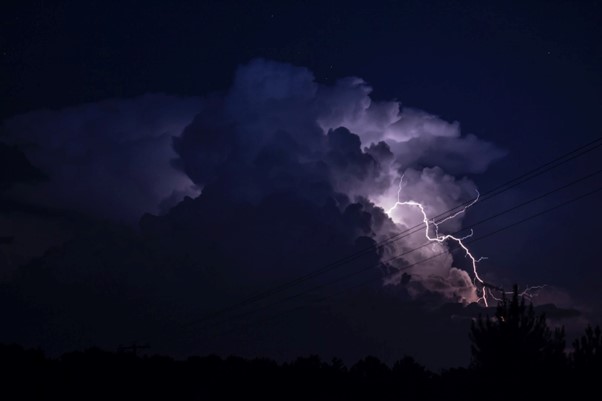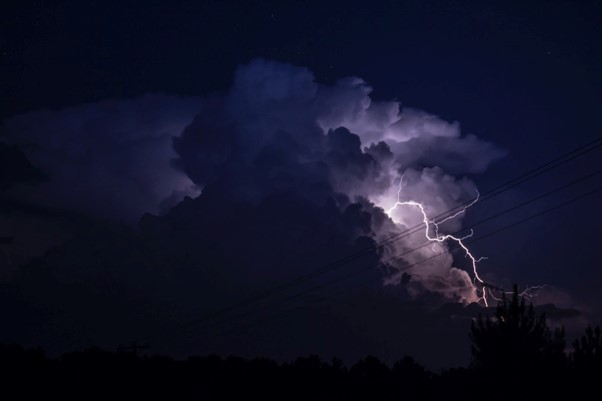Weather and climate are both risks that are inherently uncertain. It’s difficult to predict how weather will unfold in the next few hours, let alone days and even harder to predict what will happen years down the line. This uncertainty is a cost.
You can maintain a risk pot to cover this in the case things go wrong, you can transfer the risk with some sort of insurance, or you can hope for the best, which may result in a shock later down the line. Ultimately many years and over different geographies there will always be an increased cost at some point.
You cannot get lucky and avoid weather risk forever. Being prepared and being able to recover from extreme events quickly are paramount to building resilience and tackling the hazard of climate and weather.
This uncertainty can be broken out into several areas.
- Cost of preparation
- Cost of recovery
- Safety implications
- Long term engineering decisions
- Company policy and organizational costs
Being prepared
Construction companies will be forced to take the hazard of weather and climate seriously. Those that don’t will suffer increasing losses due to climate and weather risks and hazards.
So it’s likely all companies will eventually shoulder the cost of preparation. How much to prepare, how to prepare and how this is implemented is the uncertainty.
Will the prediction come true? Will we experience significantly more extreme weather than in the past? Or will the scientists be wrong? So far, they have been wrong in how quickly these changes have happened, they are happening faster than predicted. Not a good sign.
The cost of preparing for climate and weather hazards could be the cost of preparing an action plan, or generating a more robust mitigation strategy, it could also include some software costs like the use of the EHAB platform.
The cost of prevention is always cheaper than recovery, so those who can be the most prepared to deal with these weather and climate risks will see their margins protected or growing.

Recovering quickly
As more extreme events occur on sites the cost of getting back to the baseline will grow. This is where the relationship between insurance and construction will play a larger role than in the past.
With the low margins suffered by many in the construction industry, they simply don’t have cash reserves on the balance sheet that they can dig into time and time again.
Equally insurance companies aren’t infinite pots of money. With increasing weather hazards compounded by climate change this will test and put a strain on both parties.
Ultimately a combination of smart mitigation strategies and quick and nimble risk transfer products will have to be in place to create the robust resilience needed to recover quickly and effectively from these hazards.
Climate hazards and safety
The safety of construction workers around the world is always of concern. Wind, rain, snow and variable temperatures can offer weather safety hazards regardless of jurisdiction. Climate risk is set to make safety issues worse.
Working in high temperatures for example can cause heatstroke and damage to internal organs which can be fatal if exposure is consistent.
In the heatwave in March of 2022 that affected parts of India and Pakistan, these conditions were severe but workers kept going, but at what cost? It might seem strange that high temperatures and traditionally good weather would be an issue in the UK. However, there is already evidence that hot temperatures reduce productivity, increase chances of accidents onsite due to fatigue and can have long term health implications due to large amounts of dust being inhaled.
Taking the long-term view
With flood risk and temperatures rising in the UK as well as extreme rainfall the way we actually build our infrastructure is changing too. The tragic Carmont derailment showed the implications of having inadequate infrastructure not suited to the more extreme weather.
On the 12th of August 2020 debris washed onto the track after heavy rain and caused a derailment that killed 3 and injured 6. The full report concluded this was a result of the drainage system and its associated earthworks had not been constructed to the design. How many other parts of our infrastructure could have unsuitable specs, whether through age or some fault.
This is especially pertinent to consider when considering the lifecycle of much of the infrastructure we build. What we build will most likely be around in 100 years from now. What will climate and weather hazards look like 100 years from now? What is a realistic lifespan to give to infrastructure?
Weather will be much more extreme in 100 years than it is today so real thought needs to go into the design of every asset. Government agencies involved in construction already have resilience plans or adaptation strategies in place and many of these include greater specification for dealing with, as yet unrealised, weather and climate risk.
How will organizations cope?
The final hazard caused by weather and climate will be the organisational burden inflicted on companies through the need to adapt. How will companies change their practices to deal with these risks?
Ultimately every company will need adverse weather plans, climate resilience practices and tools that help them manage these risks effectively. In the same way any kind of transformation is difficult so too will this transition pose problems.
Organisations who struggle to make this transition will not only see cost wasted on ineffective implementations, but they may suffer considerable losses from increasing risks too.
Companies that can address these issues early will see their entire operations create a better culture around proactive weather risk management that will reduce climate hazards considerably and pave the road for improved margins in a rapidly changing world.




